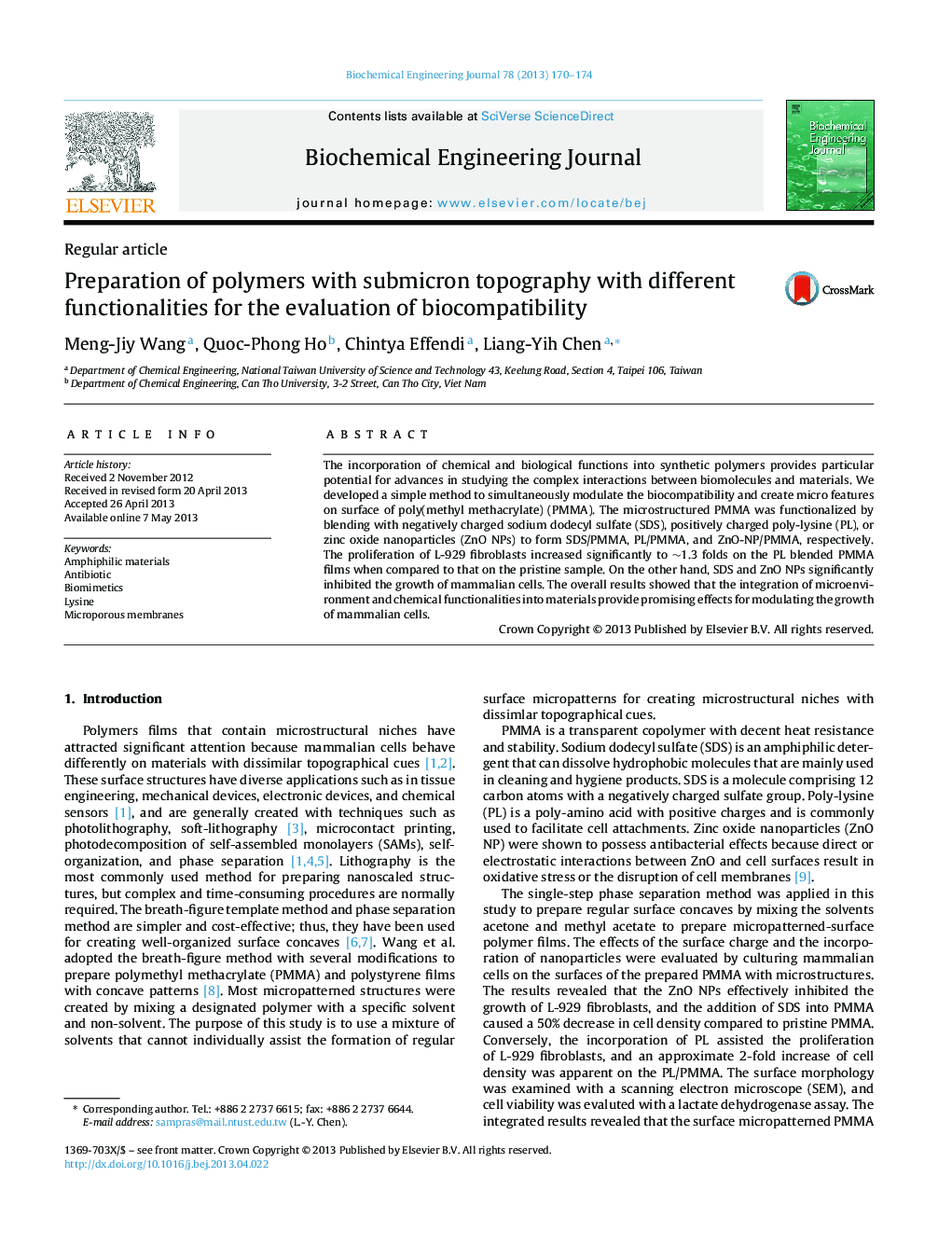| Article ID | Journal | Published Year | Pages | File Type |
|---|---|---|---|---|
| 3340 | Biochemical Engineering Journal | 2013 | 5 Pages |
•A single-step method to incorporate ZnO nanoparticles into polymers with microstructure.•Mixtures of non-toxic solvents were applied for preparing polymers with microstructure.•Biopolymers with microstructure were prepared by incorporating positively charged poly-lysine (PL).•Negatively charged sodium dodecyl sulfate (SDS) and ZnO showed inhibition for cell growth.•Addition of PL improved the cell attachment and proliferation.
The incorporation of chemical and biological functions into synthetic polymers provides particular potential for advances in studying the complex interactions between biomolecules and materials. We developed a simple method to simultaneously modulate the biocompatibility and create micro features on surface of poly(methyl methacrylate) (PMMA). The microstructured PMMA was functionalized by blending with negatively charged sodium dodecyl sulfate (SDS), positively charged poly-lysine (PL), or zinc oxide nanoparticles (ZnO NPs) to form SDS/PMMA, PL/PMMA, and ZnO-NP/PMMA, respectively. The proliferation of L-929 fibroblasts increased significantly to ∼1.3 folds on the PL blended PMMA films when compared to that on the pristine sample. On the other hand, SDS and ZnO NPs significantly inhibited the growth of mammalian cells. The overall results showed that the integration of microenvironment and chemical functionalities into materials provide promising effects for modulating the growth of mammalian cells.
